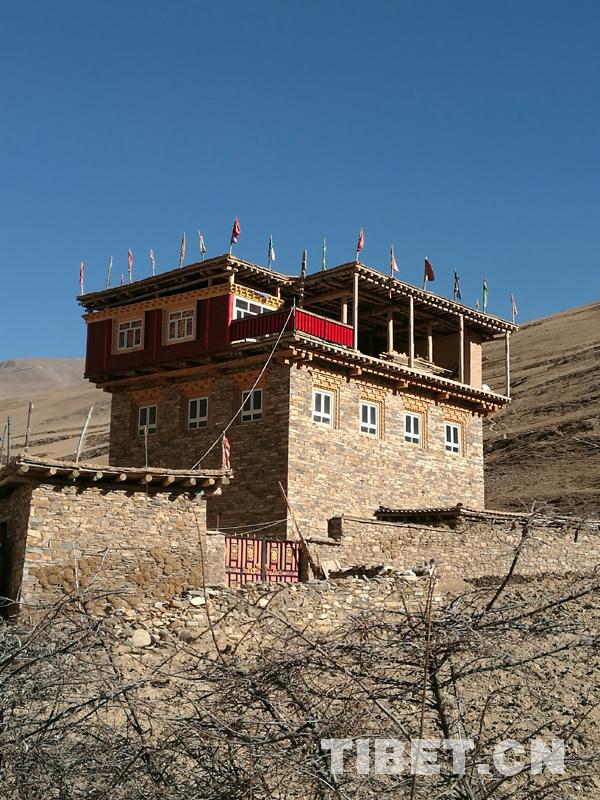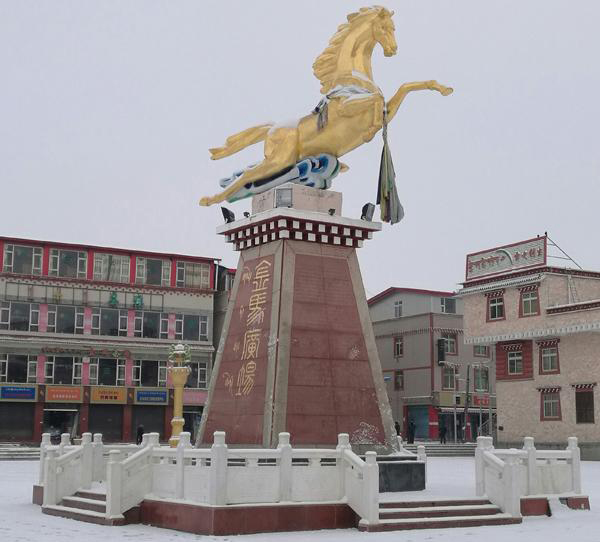Travel notes: Serthar, a golden horse on the white ice fields (II)


Serthar is located at the border of Sichuan and Qinghai, between Amdo and Gampa. Regardless of which direction you’re looking from, it is very far from big cities, such as Chengdu, Xining, Lhasa and Kunming. Even for its own autonomous prefecture capital of Kangding, it is still more than 440 kilometers away.
Until the 1950s, there was still a tribal system in Serthar. No government in fact had administrative jurisdiction over the area and construction was out of the question. When the administrative body entered Serthar in 1952 to establish a county, there were only 30 black and white tents. It wasn’t until 1956 that the first stone and wood bungalow in the current county location was built.
Influenced by natural and historic conditions, the level of social development in Serthar is relatively low, but the religious climate is particularly strong.
People here believe in myths and legends, and Gesar’s stories and ruins can be heard and seen everywhere. They respect life and worship faith.
The main color here is red; the temples are red, the houses are red, the monks dress in red, the farmers’ clothes are a shade of red and even the town is red. When people here grow old and less mobile, rather than take a nap by the fire, they go to the temple to circumambulate and pray.
As a result, centralized settlements similar to residential areas are found near almost all temples. In order to make it easier for the elderly to circumambulate and recite scriptures, family members usually invest in building a house near the temple. Therefore, the residential areas surrounding the temple have grown larger and larger, with monks, old people and families all living here, creating a small community.
The temples here mainly cover a large area, but due to no construction planning, they generally look rather messy.
Temples in Serthar basically belong to the Ningma sect of Tibetan Buddhism. The management of monks isn’t as strict as the Gelug Sect.
Generally speaking, the temples fall into two categories. One is where people are scattered; the temple appears big but there actually aren’t many people inside, such as the Jin’e Temple, which covers the whole mountain side with only a total of around 100 monks. It’s only during the dharma assembly, which takes place four times ayear that all the monks get together. In normal times, most of them return home for housework.
The other type is where people all gather together, like at Larong Temple’s Wuming Buddhist College. Located in a mountain valley, people flock here in numbers including monks to learn, nuns to practice Buddhism, elderly people to live, friends and relatives to seek refuge, guests to rent and many more. Many curious tourists wander around pondering about Tibet, and they are often amazed by the spectacular view of the Wuming Buddhist College.
For most visitors, they are unaware of the people inside the temple and don’t understand the rules of learning Buddhist doctrines. They don’t care about house leaking, water polluted by garbage, food safety, epidemic outbreaks and social security risks that may occur here. Even more terrifying is a fire could occur at any time when they use electricity, gas or fire, and the consequences could be disastrous.
For such a large-scale temple, some are curious, some are just onlookers; some are full of praise, some resent it; some long for it, some reject it. We should respect faith, but also revere life. We should take care of those vulnerable. We need to have objective and rational perceptions, sincere humanistic feelings and also necessary means of governance.
Your Comment
Name E-mailRelated News
-
;
-
-

-
Travel notes: Serthar, a golden horse on the white ice fields (I)
Serthar means "Golden Horse" in Tibetan. What does a Golden Horse running on the snow look like? I honestly have no idea. Although I have visited the pastoral areas of Tibet and other Tibetan areas many times, this was the first time I stayed on the grasslands, en
-
Based in Lhasa, Tibet Vista is a Tibet travel agency that specialized in Tibet permit, and Tibet tours for both private and group travelers at a local price!
•4 Days Lhasa City Group Tour from USD 460 •8 Days Everest Base Camp Group Tour from USD 850 •15 Days Mt.Kailash Group Tour from USD 1780 •2016 Tibet Train Tours from Beijing, Shanghai, Chengdu, Xining,etc










